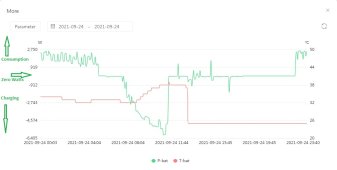From it sounds like it’s certainly the sort of system I was thinking about doing. I was thinking about using my own ink bird controller as opposed to the ones that come with it so I could set the heating pad to a cooler temperature
Question, so you don’t mind running it on AC through your inverter versus direct DC like other folks or talking about.
Thanks so much for the invite I’m starting to get my head wrapped around all this

I slapped together the heating from what I had laying around. Cold weather was upon me by the time I finished building my batteries and it was meant to be temporary until I did something like upnorthandpersonal. But it has proved to be more than adequate so I haven't even thought about buying the upnorth parts.
The seed starting pad I really like - no need to glue it to a metal sheet. And with a good insulated box keeping the heat I see no reason to place it under the cells. The pad actually puts out heat from both sides. I have temp sensors on the "inside" between the packs and on the "outside" - temp difference is about 4F. The inside probes are close enough to feel the heat coming off the pad. The outside probes are a good reading of the box temp - they are less than a degree off of each other
I have no problem with using power on the AC side of the inverter.
Heat pad and controller uses about 21w. I expected the pad to shut off at my set temp (58F) but it hasn't so I'm using 530w per day according to my Kill A Watt meter.
Further description of my system:
It was meant to be a backup but I hated to see all the potential energy from 1560w PV array go unused.
I have added a Moes ATS to use some of the capacity of my battery bank. (set a low voltage to switch to grid and back to solar with a higher voltage) The voltage setting to switch to grid is high enough to reserve most of the bank's capacity. (26.6v) I'll lower that when the sun do shine after the dark days of winter.
I haven't seen the sun in 7 days. My inverter uses 25w regardless of using the grid or not. But even on overcast days I'm making enough power to keep the battery bank voltage fairly constant.
without the ATS:
I'm pushing 1200w daily usage with just the inverter and heating pad. With a 9600Wh bank I'd have 8 days (100% discharge) in total darkness.
Given some sun I can make that and enough to run my aquariums (while keeping a reserve for grid down)
It's a given that the constant pad on isn't going to work for those with a small battery capacity but it's a workable if not ideal setup with a large bank.




